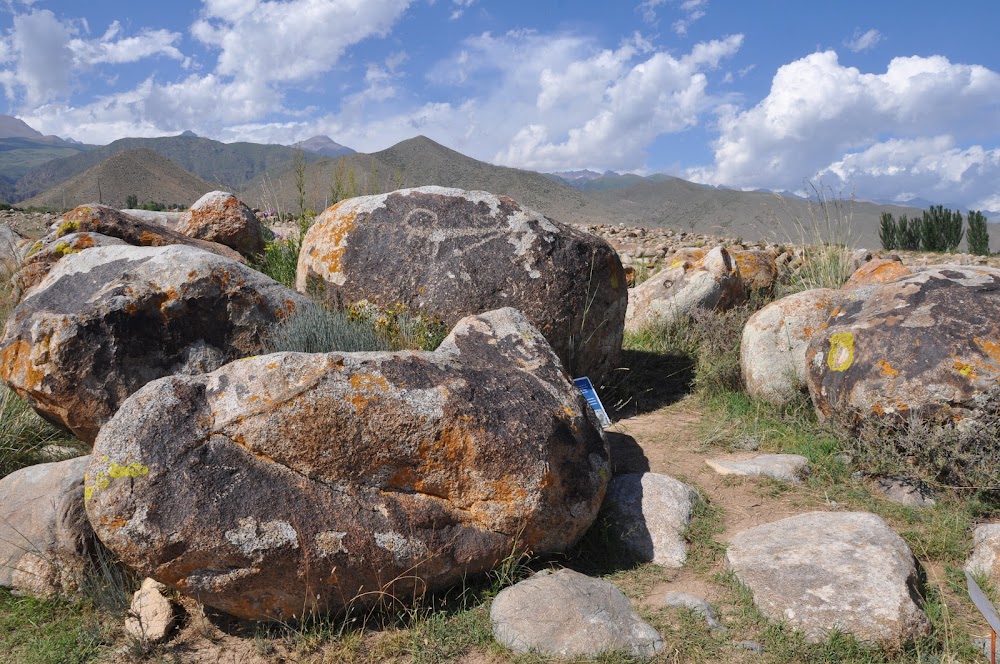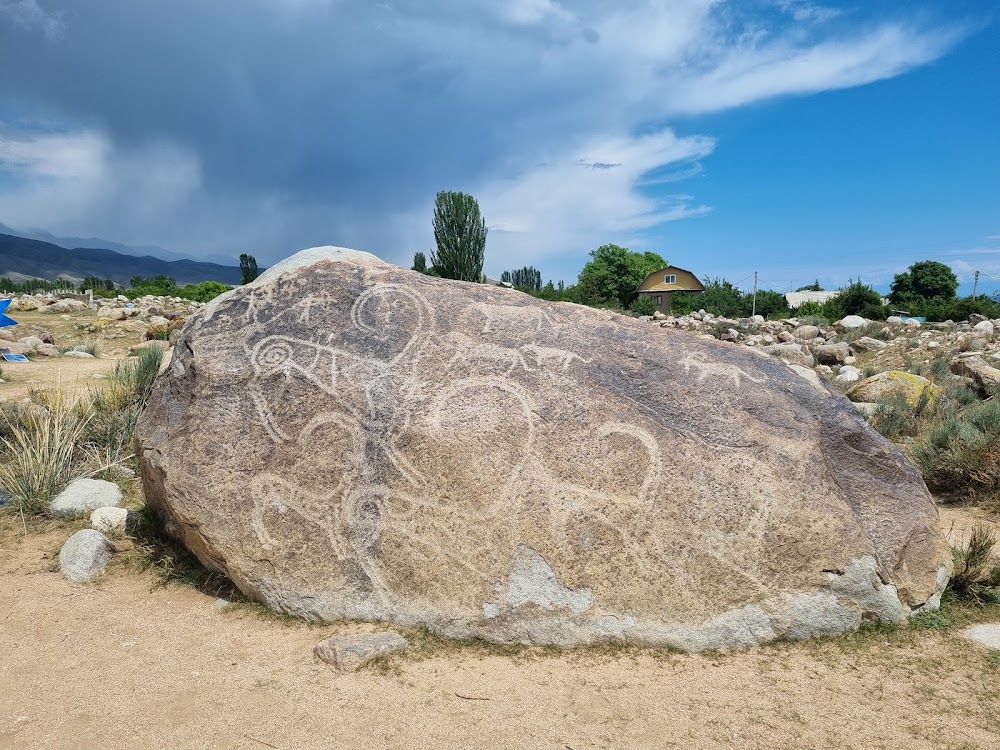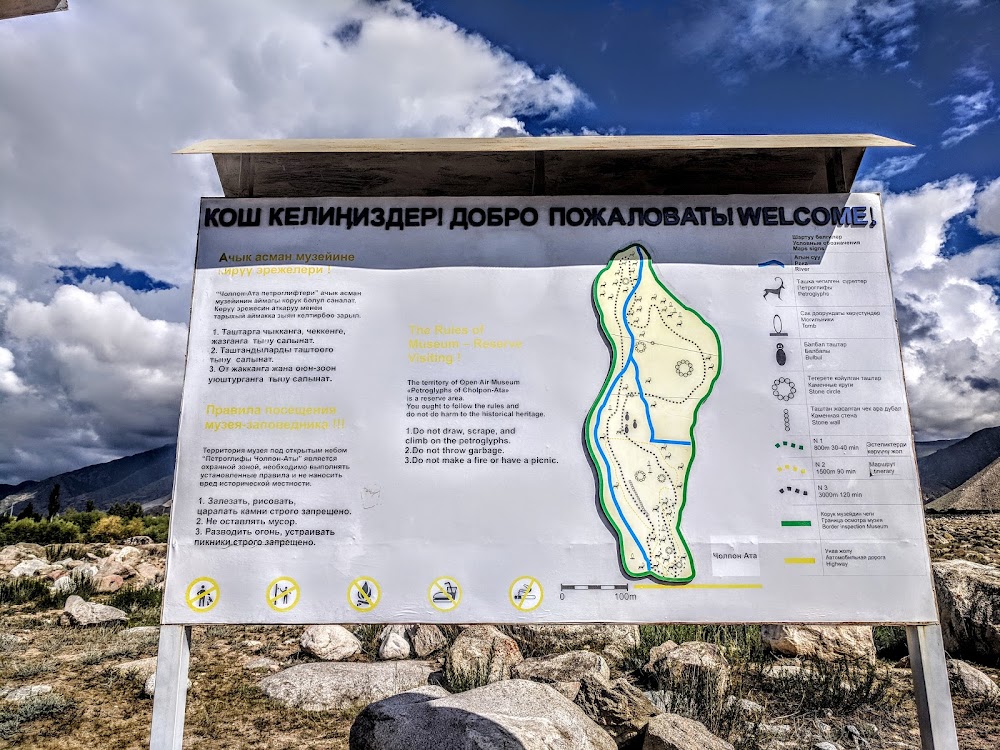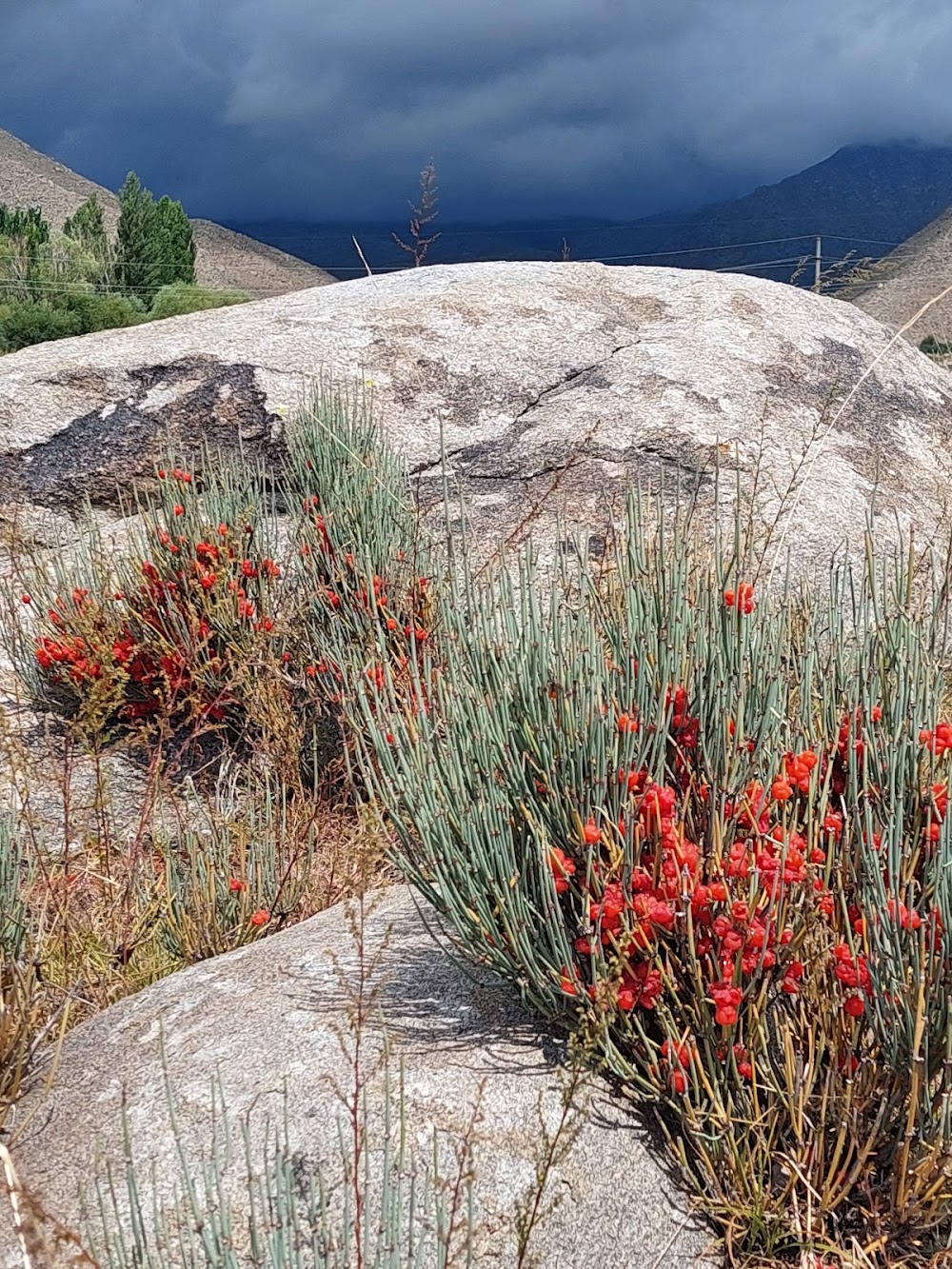Petroglyphs of Cholpon-Ata (Чолпон-Ата таш белгилери)
Overview
The Petroglyphs Museum, nestled in the stunning Issyk-Kul Region of Kyrgyzstan, is a captivating open-air museum that showcases ancient rock carvings dating from approximately 800 BC to 1200 AD. Situated near the charming town of Cholpon-Ata, this remarkable site is surrounded by a landscape adorned with boulders, all framed by the majestic Tian Shan mountains and the serene waters of Lake Issyk-Kul. This unique combination of natural beauty and historical significance makes the Petroglyphs Museum a must-visit destination for history buffs and adventurous travelers alike.
The petroglyphs, or rock engravings, were crafted by the indigenous Scythian and Turkic tribes that once inhabited these lands. These intricate carvings depict a rich tapestry of scenes and symbols, including hunting expeditions, ritual dances, and solar motifs, offering profound insights into the spiritual and daily lives of these ancient peoples. Among the most frequently portrayed figures are the majestic ibex, deer, wolves, goats, and hunters wielding bows, alongside images of chariots and other symbolic representations linked to their beliefs.
These impressive petroglyphs were skillfully etched onto the surfaces of large, smooth boulders scattered across the museum's grounds, using rudimentary tools such as sharp stones. Remarkably, these rock carvings have been well-preserved over the centuries, thanks in part to the region’s dry climate and the durable granite boulders. The meticulous chipping and scratching techniques employed by the ancient artists reflect a remarkable level of precision and dedication.
The vision of transforming this area into an open-air museum was inspired by the passion of local archaeologists and historians who recognized the importance of these ancient carvings. With time, they garnered support from the community and international researchers, meticulously mapping out the locations of the most significant petroglyphs. They established pathways and informational boards for visitors, ensuring that these ancient marks are both accessible and well-preserved, allowing modern-day admirers to engage with stories etched in stone thousands of years ago.
Unlike traditional museums with walls and exhibits, the Petroglyphs Museum invites visitors to navigate the natural landscape where the boulders are located. Each stone tells a different story, and strategically placed signs guide visitors through the area, offering context and explanations for the carvings they encounter. This setup not only preserves the authentic atmosphere of the ancient site but also enhances the experience by integrating it with the breathtaking natural surroundings.
In addition to the rock carvings, the broader museum area occasionally features replicas of ancient dwellings and reconstructions that illustrate the living conditions and daily lives of the people who created these petroglyphs. These replicas, based on archaeological findings, enrich the educational experience for visitors, providing a tangible connection to the past.
Furthermore, initiatives have been undertaken to promote the significance of the Petroglyphs Museum to both local residents and international audiences. By fostering cultural tourism and educational opportunities, the museum plays a vital role in preserving the heritage of the Issyk-Kul Region. This not only benefits the local economy but also raises awareness about the importance of safeguarding such invaluable historical sites.
The Petroglyphs Museum of Cholpon-Ata stands as a testament to the creative spirit of ancient peoples and their enduring legacy. It serves as a bridge connecting the past with the present, offering visitors a unique glimpse into the history and culture of the Kyrgyz region. By wandering among the ancient stones, guests can forge a deep connection with the lives, beliefs, and artistic expressions of the early inhabitants of this beautiful land.






